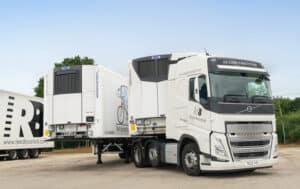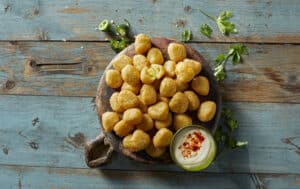Transport for London has misjudged the importance of technology when developing its Direct Vision Standard (DVS) legislation, a pioneering road safety expert has warned. From 26 October 2020, all goods vehicles over 12 tonnes will require a permit to drive into Greater London, including vehicles from outside of the UK although enforcement has been delayed until March 1 2021. Enforced by Transport for London (TfL), the DVS legislation is based on a ‘star rating’ indicating how much a driver can see from the cab in relation to other road users.
But TfL has focused too much on ‘Direct Vision’ – where the driver sees through unimpeded line of sight – at the expense of ‘Indirect Vision’ – where drivers have an awareness of their surroundings through state-of-the-art camera monitor systems and ultrasonic obstacle detection. TfL claims drivers using indirect vision have a slower response time than those using direct vision alone. But direct vision has its limitations, according to vehicle safety expert Emily Hardy, who says cameras, sensors and reversing alarms are vital tools to prevent accidents.
The marketing manager of Kent-based Brigade Electronics said:
“While direct vision is of course important, the TfL’s research is flawed and simplistic when it comes to technology. Direct vision is not perfect because if you are not looking in the right place at the right time, you will not see the potential danger. And safety technology is more than just indirect vision. It includes passive and active systems that alert the driver to something in his blind spot – which encourages him to look. Meanwhile, cameras provide a wider angle of view than mirrors. The TfL guidelines create an impression that if you have direct vision you don’t need to fit sensors and other tech. This is a backwards step and diminishes the good work of schemes like CLOCS and FORS that have raised industry standards. HGV drivers need a combination of direct and indirect vision for optimal safety.”
Brigade has developed a range of Direct Vision Standard safety systems to ensure vehicles meet the minimum requirements for the legislation.
HGVs that do not meet the minimum requirement of one star need to comply with the Safe System which requires the installation of extra devices for indirect vision (similar to FORS & CLOCS specifications). Complying with the Safe System will not alter the vehicle’s star rating but will permit you to drive into Greater London. By 2024 DVS minimum star requirements increases to three stars. Many fleet operators and logistics businesses could fall foul of the star-rating regulations when one- and two-star rated vehicles are banned from October 2024 unless they are fitted with certain safety equipment.
Brigade’s DVS star rating service, which is completely free of charge to use, will help fleet operators to avoid any confusion and quickly determine whether their vehicles are compliant and if any additional safety devices will need to be fitted.











